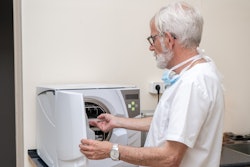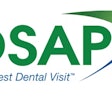
From Zika outbreaks to a contaminated water line, infectious diseases have made the headlines throughout 2017. That's why DrBicuspid.com spoke with Christina Thomas, executive director of the Organization for Safety, Asepsis and Prevention (OSAP), about current infection-control trends and what dentists really need to know.
 OSAP Executive Director Christina Thomas. Image courtesy of OSAP.
OSAP Executive Director Christina Thomas. Image courtesy of OSAP.While the spread of any infectious disease is no doubt a tragedy that tends to grab national attention, the processes that lead to safe dental visits are not as widely publicized. In fact, safety in the dental office starts with education and a well-designed plan for infection prevention and control that is implemented consistently.
"Safety matters," Thomas said. "I cannot stress that enough. It matters for both the patient and the provider."
So how can you ensure every dental visit is a safe one? Thomas pointed to two recent initiatives: the infection-control summary and checklist from the U.S. Centers for Disease Control and Prevention (CDC) and a multiyear education and credentialing initiative from OSAP, the Dental Assisting National Board (DANB), and the Dental Auxiliary Learning and Education (DALE) Foundation.
CDC's guidelines still relevant
In 2016, the CDC released a summary of basic recommendations for infection prevention and control for various dental settings and also a detailed checklist to help with compliance. Although these resources are a year old now, they are still very relevant for dentists, Thomas noted.
"The summary was released in 2016, and we want to ensure that every office in every dental setting knows about this," she said. "These recommendations are for safe practices in dentistry."
The summary and checklist, titled Summary of Infection Prevention Practices in Dental Settings: Basic Expectations for Safe Care and Companion Checklist, are intended to be a compilation of the most important facts from the CDC's 2003 guidelines. The goal was to better communicate standards for infection prevention and control for dentistry.
"One of the key recommendations is that every office needs an infection prevention and control program and an infection control coordinator," Thomas said. "The infection control coordinator is a key staff member whose role is to serve as a resource for the dental team in infection control and safety and to maintain oversight over the practice's written infection prevention and control plan."
Thomas emphasized how important the coordinator role is and the need for other team members to support the coordinator, even if that's not his or her official title.
"Organizations and dental settings have to do what's best to optimally deliver safe and infection-free oral healthcare, and designating a person who is responsible for overseeing the infection prevention and control program in the dental office ensures a greater amount of success," she said. "It really is valuable to have one person who is accountable for this information and staying up-to-date, which ultimately helps the practice ensure that their patients and their providers are safe."
New initiative to promote education and safety
One way for team members to stay up-to-date with guidelines for infection prevention and control is a new multiyear education and credentialing initiative from OSAP, DANB, and the DALE Foundation. One of the first parts of the initiative, an online continuing education module about the CDC's summary, is already available. The education initiative will be completed in the middle of 2018.
"We're excited about this collaboration and what it will offer to the profession," Thomas said.
In addition, oral healthcare professionals can visit OSAP's website and attend in-person events to learn more about infection prevention and control, she recommended. The CDC website also is a great resource for those wanting to learn more about the summary and checklist.
"We know that the dental team works hard to deliver safe dental care," Thomas said. "We still believe there is work to do to make sure that every dental practice, whether it's a large organization or single practitioner office, recognizes the importance of infection control and safety in dentistry."



















